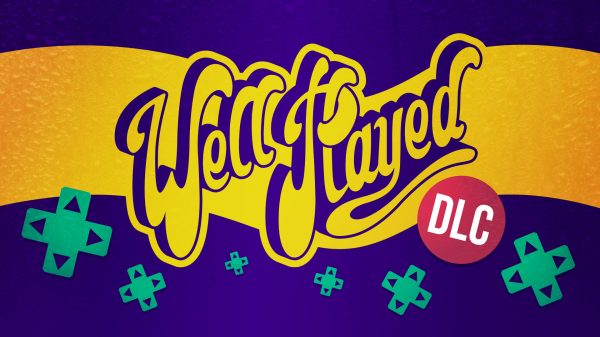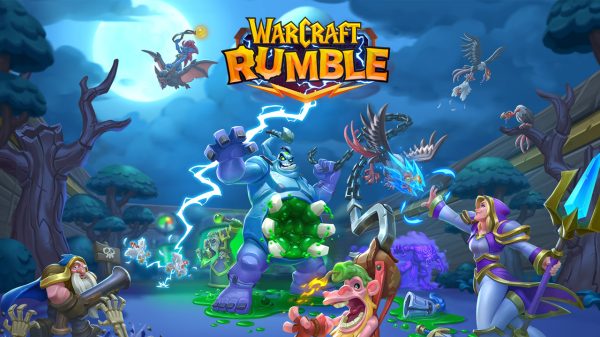There’s a certain sort of courage that comes with the hopeless struggle. Some would call it ‘being stubborn’. Others name this virtue foolishness. However, historians know too many struggles like these to dismiss them out of hand. After all, it takes guts to continue a valiant fight even long after it’s become unwinnable, and guts begets glory. Tales of these struggles can inspire millions more to take up your cause and teach the lessons of sacrifice. The valiant, yet doomed, defence by the Greeks at Thermopylae became a legend in their native land. The ill-fated Battle of the Alamo is one of the most famous (and mythologised) battles in US history, with countless stories about it.
But no country today knows the value of a hopeless struggle for a just cause like Poland. Its experience of the Second World War is littered with last stands against goliaths, and all are celebrated by its people today as the moral victories they are. That said, there is no greater story of Polish guts and glory than the Warsaw Uprising of 1944. In the twilight of the Nazis’ crushing grip on Poland – featuring years of unthinkable atrocities performed against the oppressed – what remained of its resistance launched an uprising in Warsaw on the afternoon of August 1st, 1944.
It’s here, in the dawn of the Warsaw Uprising, that Pixilated Milk’s tactical RPG WARSAW begins. The bright and beautiful ‘Paris of the East’ is ready for its liberation; your band of brothers and sisters are but one in the largest resistance operation of the war. But can the Polish Home Army win…or even survive?

Combat can get heated sometimes
Immediate impressions of WARSAW were of the game’s similarity to 2016’s Darkest Dungeon, but you know what they say about books and covers. On the surface, WARSAW is indeed familiar: there are many mechanics lifted straight from Red Hook Studios’ RPG masterwork, but these deviations often have twists that make WARSAW stand out. In fact, aspects of WARSAW have been performed better than their counterparts from three years ago.
The most obvious of these improvements is in combat. Much like in Darkest Dungeon, WARSAW’s characters each possess a variety of Skills that can be used for a number of tasks; healing and buffing your comrades or damaging and debuffing your enemies. However, a greater variety of debuffs and an extra row for placement takes an already winning combat system and folds it out to reveal a more complex strategy requirement. Three different ammo types – Skills will use up one of these three – also add resource management to the pile of player paperwork. You’ll run out more often than you think, which often means having to scavenge more.
Between combat, Darkest Dungeon aficionados will engage in a familiar activity and an unfamiliar one. A home base serves as your recruitment pool, where you buy or sell supplies, and a chance to level up your lads and lasses with a special currency. Once you’ve done everything you want to here, you can choose a mission to complete. The inner districts of Warsaw – Żoliborz, Wola, Ochota, Śródmieście, Praga and Mokotów – were at the heart of the 1944 uprising, so it should be no surprise that they’ll be where these missions take place.
Once you pick a mission, you’ll be sent to a real-time scouting screen where you control your entire hand-picked fireteam as one token, Final Fantasy style. Get caught by a Nazi patrol, and you’ll start combat. Items help you navigate more efficiently, heal your team, and even discover obstacles before they trap you. This screen was far and away the most tense but also most tedious, part of WARSAW. Oftentimes patrols will spot you before you spot them, creating situations that draw bated breath. That said, it can also break your playthrough if your limping fireteam accidentally sets off an encounter that absolutely destroys them. A neat detail, though, is that the map is historically accurate (it seems) to the streets of 1944 Warsaw!
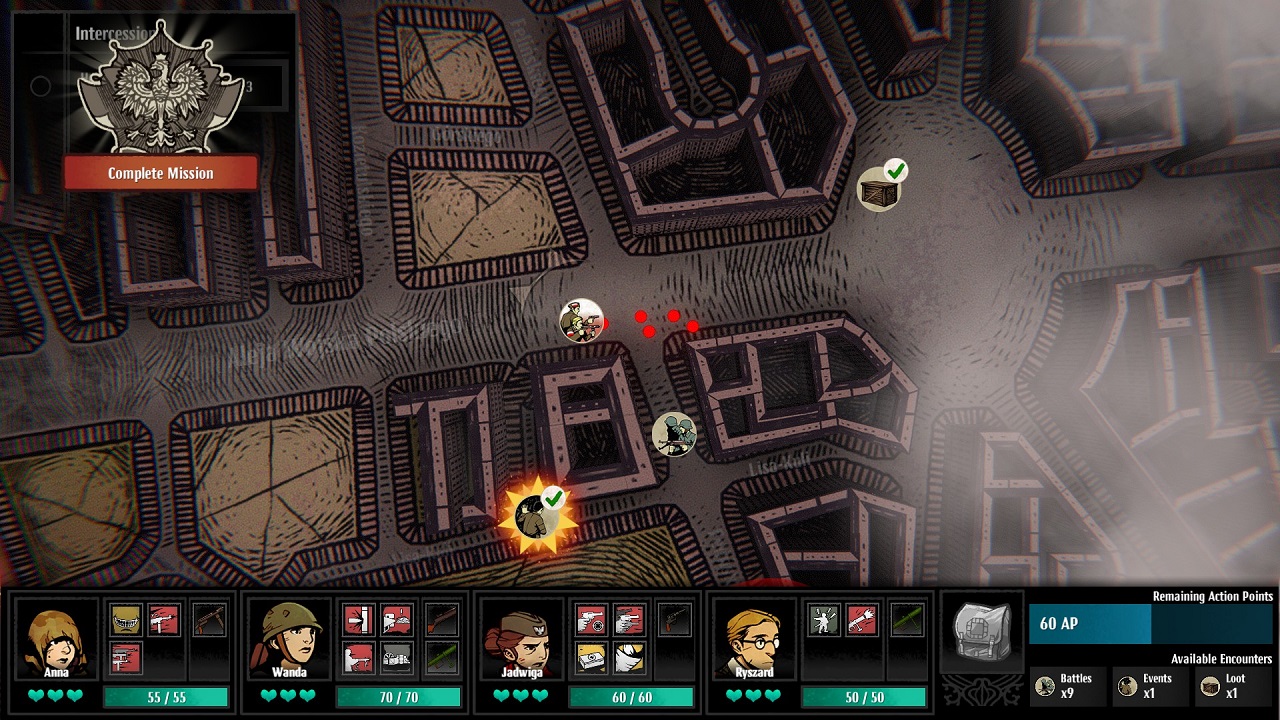
A quiet moment between the thunder of guns
Three missions are available each time you check the board, but you can only choose one to undertake. The districts whose missions you don’t complete will be hit with Attrition, and the morale of its people will sink. If a district gets hit with too much of the Nazi war machine or simply decides that the uprising isn’t worth it anymore, it will surrender. If all six surrender, the game is over. Not that you won’t see it. As the uprising drags on, less and less remains of the bright and beautiful city that you began with. Loading screens, status reports, and even the scouting screen’s 3D buildings will slowly fall apart from the constant barrage from Hitler’s barmy army.
WARSAW is bleak from the very first screen, though. The ink-heavy art style, with its faceless Nazis and cross-hatched shadows, completes a melancholy marriage with the chilling soundtrack from Mariuz Szypura. The writing is superbly crafted, with all the grim stoicism that the tragic history demands. Character is key to WARSAW’s charm, and the cast is as diverse as the actual uprising. Their backstories and endings provide just enough to project a character, but the lack of their actual impact on playthroughs outside of combat is a sorely missed opportunity.
There are yet more meters to watch, too! If the uprising’s momentum reaches zero, the game is over. When characters are injured it’ll take them a good while to recover, forcing you to make deployment concessions. Repairing and selling weapons will become your greatest source of income, so you’d better not lose any missions. In WARSAW, the pressure will start building from the word ‘go’. There is almost never nothing to stress about, and that’s just the way that the game wants it. Even at its easiest difficulty level, it can be very harsh to newcomers and have some nasty surprises for veterans. Luckily, WARSAW is now much more polished after a series of patches.
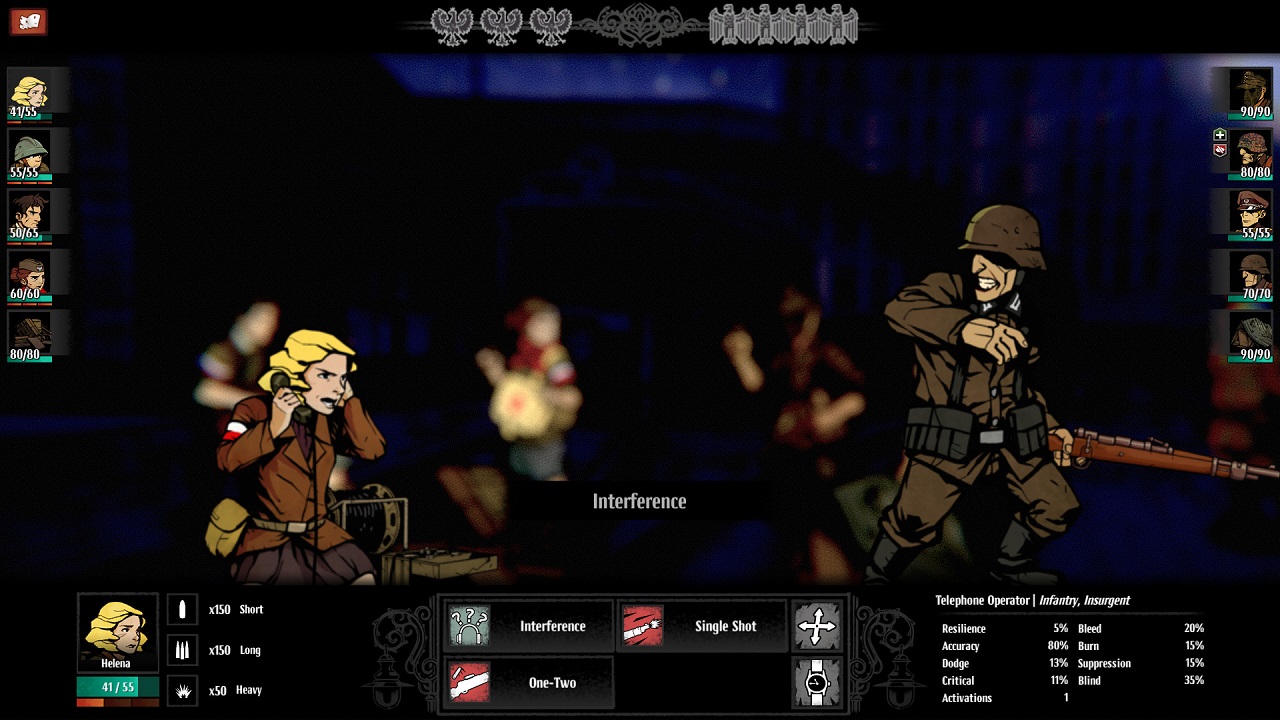
‘Attention, this is Joe…Joe Mama’
You can trust this reviewer when they say that you’ll lose your first playthrough. In fact, you’ll technically lose every playthrough. For those who don’t know the history of the uprising, I’m going to spoil it for you. When the Polish government-in-exile considered the situation of mid-late 1944, it grew concerned. While the Nazis being on the retreat was satisfying to watch, it was Stalin’s Red Army that was hot on their trail. The Poles had hoped that liberation would come from the Western Allies – Britain and the Unites States. That sadly became impossible after said armies became bogged down in Northern France.
The Polish Home Army was advised by the government-in-exile to secure Warsaw and establish autonomy over it before the Soviets arrived. The uprising was an attempt to achieve this goal, with help from the Red Army…help that never came. While the reasons for the lack of Soviet activity (lacktivity, if you will), aren’t as controversial as they used to be, it mattered little for the brave fighters of Warsaw. The Polish Home Army would be ground down until it finally surrendered on the 2nd of October – 63 days after it had begun. Warsaw would be ‘liberated’ by the Red Army on the 17th of January 1945 and trapped inside the new Poland, a Soviet satellite state. Poland would not see freedom again until 1989.
WARSAW takes place over these 63 days, and your objective is simply to survive. You can beat the game, sure, but you can’t win it. Your cause, like the real uprising, is doomed from the very start. Games like this don’t show up every day. WARSAW succeeds where a lot of historical media fails: It makes you feel the tragedy of a hard-lost fight. Put simply, it’s your hard-lost fight. No matter how many Nazis get what they deserve, or how efficiently you manage your base, the uprising will always fail. The Western Allies remain unable to help. The Soviets still refuse to come to the rescue. Warsaw falls all over again.
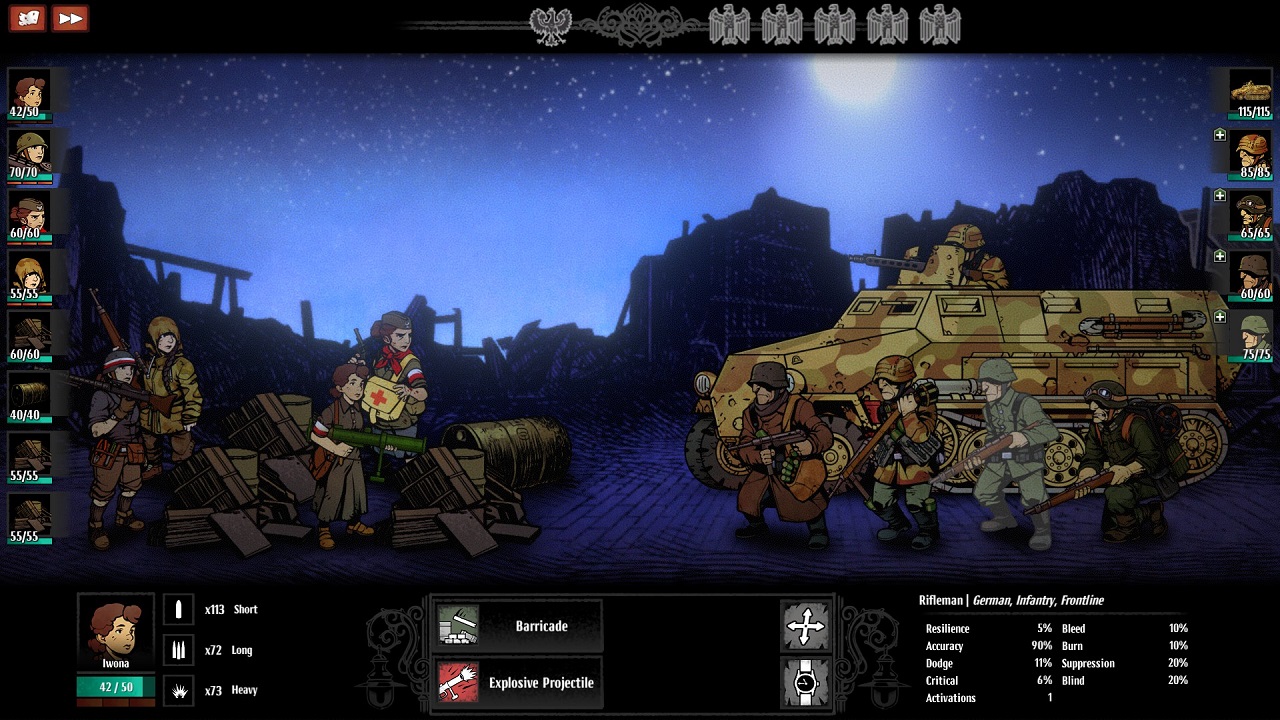
Armoured vehicles and heavy weapons provide boss battles of sorts
As the ‘Paris of the East’ crumbles around you, its dwindling population ticking away before your very eyes (no, really, there’s a ticker counter for it), the real tragedy of the uprising hits home. The only real downside to such a cruel repetition of failure is that playthroughs can be anywhere from 20 minutes to five hours long. You’ll get stuck into WARSAW, no doubt about it. Its core gameplay loop is as compulsive as it is crushing. Hours were spent playing before time was kept for the purposes of this review!
It’s fitting that a game about an uprising in the name of freedom should arrive in a time of great turmoil. Across the world, peoples at this very moment fight for their rights, a better life, and – like those brave Varsovians in 1944 – their very survival. While probably not their intention, there’s no denying the passion that’s been put into this game and its tale of a city’s deperate struggle against evil. Stories like this are inspirational, not just to their native lands, but to all of those who hold out hope against the forces of fear and hate. WARSAW is a small, yet not unrecognised, fulfilment of an old Polish maxim:
‘Za naszą i waszą wolność.’ – ‘For our freedom and yours.’
Final thoughts
Darkest Dungeon may be bleak, but WARSAW makes its inspiration look like a teddy bear’s picnic. There’s a dream game pseudo-nicheness to the whole idea; somebody at Pixilated Milk thought ‘I want to do Darkest Dungeon but about the Warsaw Uprising’ and scratched the right backs to make it happen. And this reviewer is glad that it did, because it turned out to be a real good game about a story that must continue to be told to the world.
Reviewed on PC // Review code supplied by publisher
Click here for more information on WellPlayed’s review policy and ethics
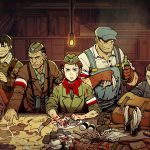
- Pixelated Milk
- Pixelated Milk / gaming company
- PC
- October 3, 2019



Arana blames her stunted social skills and her general uselessness on a lifetime of video games. Between her ears is a comprehensive Team Fortress 2 encyclopedia. Her brain remains at large.













